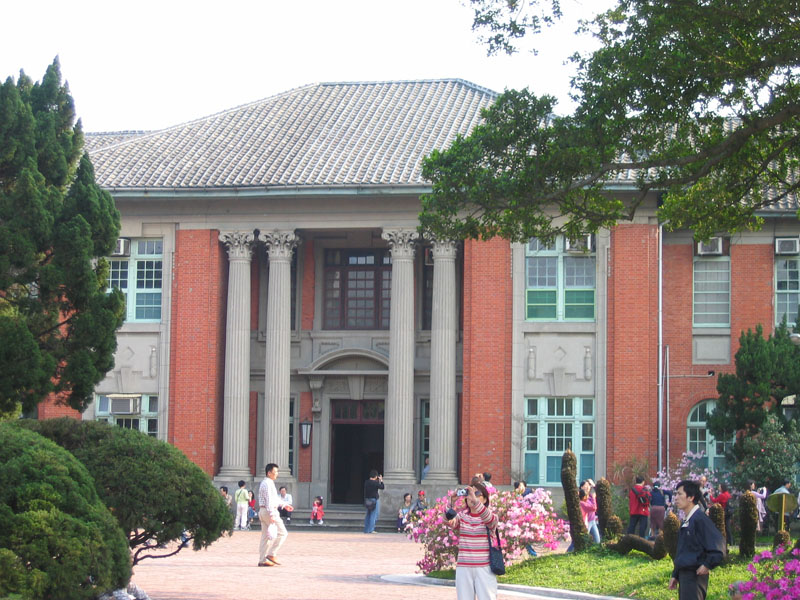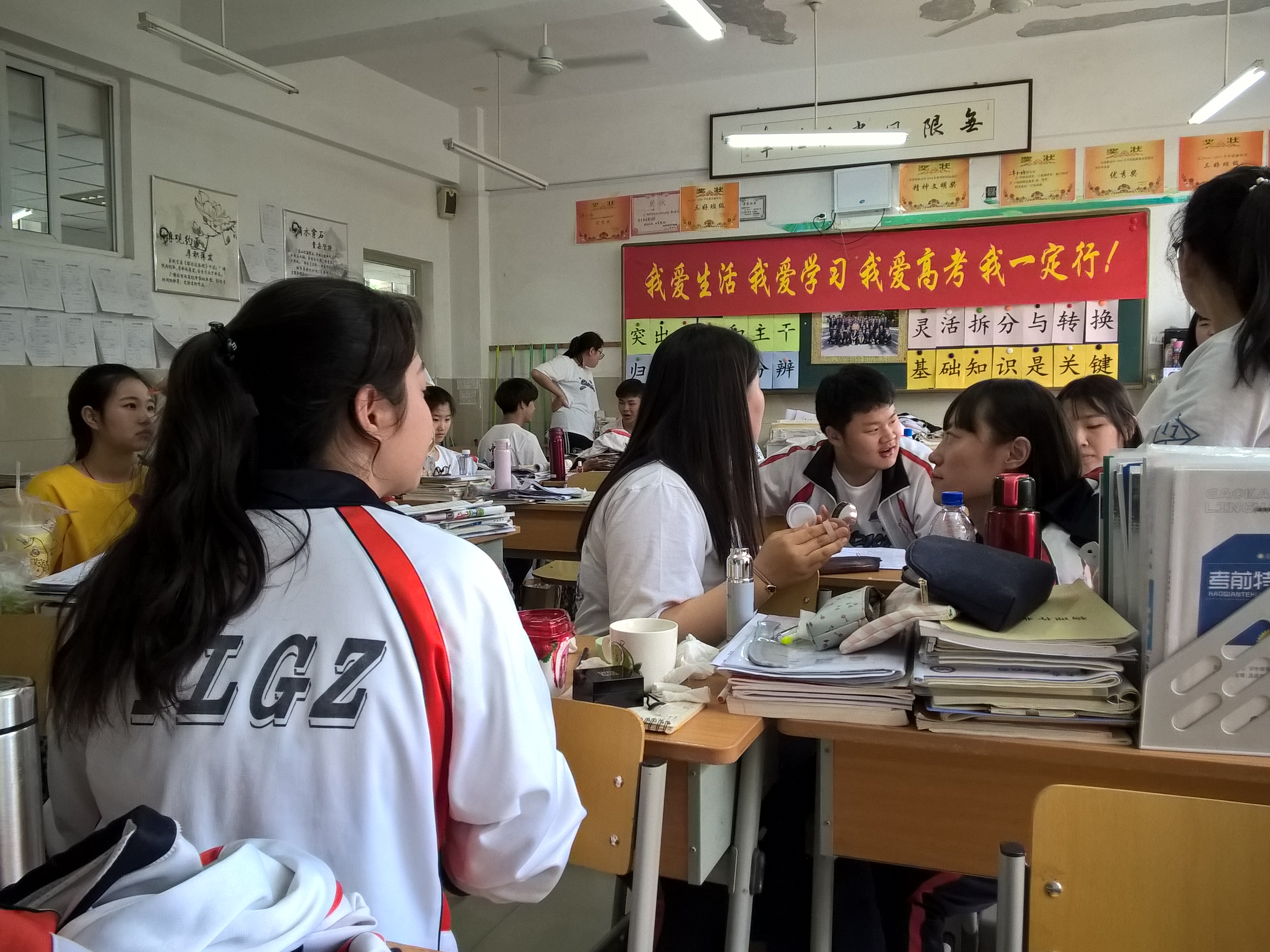|
Southwest Associated University
The National Southwestern Associated University was a national public university from 1938 to 1946 based in Kunming, Yunnan, China. It was formed by the wartime incorporation of National Peking University, National Tsinghua University, and National Nankai University. When the Second Sino-Japanese War broke out between China and Japan in 1937, Peking University, Tsinghua University and Nankai University merged to form Changsha Temporary University in Changsha and later National Southwestern Associated University in Kunming and Mengzi, in Southwest China's Yunnan Province. After the war, the universities moved back and resumed their operation. What was left behind in Kunming became the National Kunming Normal University which later emerged as the Yunnan Normal University. History By summer 1937, the Imperial Japanese Army had bombed Nankai University to the ground in Tianjin and occupied areas including the campuses of two of the country's leading universities in Beijing: Pek ... [...More Info...] [...Related Items...] OR: [Wikipedia] [Google] [Baidu] |
Peking University
Peking University (PKU) is a Public university, public Types of universities and colleges in China#By designated academic emphasis, university in Haidian, Beijing, China. It is affiliated with and funded by the Ministry of Education of the People's Republic of China, Ministry of Education of China. The university is part of Project 211, Project 985, and the Double First-Class Construction. It is also a member in the C9 League. Established as the Imperial University of Peking in 1898 by a royal charter from the Guangxu Emperor, it is the second oldest university in China after Tianjin University (established in 1895). In May 1912, the government of the Republic of China ordered the Imperial University of Peking to be renamed Peking University. Then Peking University merged with Yenching University during the nationwide restructuring of universities and academic departments in 1952. In April 2000, the Beijing Medical University merged with the Peking University. Peking Universit ... [...More Info...] [...Related Items...] OR: [Wikipedia] [Google] [Baidu] |
Hunan
Hunan is an inland Provinces of China, province in Central China. Located in the middle reaches of the Yangtze watershed, it borders the Administrative divisions of China, province-level divisions of Hubei to the north, Jiangxi to the east, Guangdong and Guangxi to the south, and Guizhou and Chongqing to the northwest. Its capital and largest city is Changsha, which abuts the Xiang River. Hengyang, Zhuzhou, and Yueyang are among its most populous urban cities. With a population of just over 66 million residing in an area of approximately , it is China's List of Chinese administrative divisions by population, 7th-most populous province, the third-most populous among landlocked provinces (after Henan and Sichuan), the third-most populous in South Central China (after Guangdong and Henan), and the second-most populous province in Central China. It is the largest province in South Central China and the fourth-largest landlocked province. Hunan's Gross domestic product#Nominal GDP ... [...More Info...] [...Related Items...] OR: [Wikipedia] [Google] [Baidu] |
Universities And Colleges Established In 1937
A university () is an educational institution, institution of tertiary education and research which awards academic degrees in several Discipline (academia), academic disciplines. ''University'' is derived from the Latin phrase , which roughly means "community of teachers and scholars". Universities typically offer both undergraduate education, undergraduate and postgraduate education, postgraduate programs. The first universities in Europe were established by Catholic Church, Catholic monks. The University of Bologna (), Italy, which was founded in 1088, is the first university in the sense of: *being a high degree-awarding institute. *using the word (which was coined at its foundation). *having independence from the ecclesiastic schools and issuing secular as well as non-secular degrees (with teaching conducted by both clergy and non-clergy): grammar, rhetoric, logic, theology, canon law and notarial law.Hunt Janin: "The university in medieval life, 1179–1499", McFarland, 2 ... [...More Info...] [...Related Items...] OR: [Wikipedia] [Google] [Baidu] |
Defunct Universities And Colleges In China
Defunct may refer to: * Defunct (video game), ''Defunct'' (video game), 2014 * Zombie process or defunct process, in Unix-like operating systems See also * * :Former entities * End-of-life product * Obsolescence {{Disambiguation ... [...More Info...] [...Related Items...] OR: [Wikipedia] [Google] [Baidu] |
National Southwestern Associated University
The National Southwestern Associated University was a national public university from 1938 to 1946 based in Kunming, Yunnan, China. It was formed by the wartime incorporation of National Peking University, National Tsinghua University, and National Nankai University. When the Second Sino-Japanese War broke out between China and Japan in 1937, Peking University, Tsinghua University and Nankai University merged to form Changsha Temporary University in Changsha and later National Southwestern Associated University in Kunming and Mengzi, in Southwest China's Yunnan Province. After the war, the universities moved back and resumed their operation. What was left behind in Kunming became the National Kunming Normal University which later emerged as the Yunnan Normal University. History By summer 1937, the Imperial Japanese Army had bombed Nankai University to the ground in Tianjin and occupied areas including the campuses of two of the country's leading universities in Bei ... [...More Info...] [...Related Items...] OR: [Wikipedia] [Google] [Baidu] |
Education In The Republic Of China
The educational system in Taiwan is the responsibility of the Ministry of Education (Taiwan), Ministry of Education. The system produces pupils with some of the highest test scores in the world, especially in mathematics and science. In 2015, Taiwanese students achieved one of the world's best results in mathematics, science and literacy, as tested by the Programme for International Student Assessment (PISA), a worldwide evaluation of 15-year-old school pupils' scholastic performance. Taiwan is one of the top-performing OECD countries in reading literacy, mathematics and sciences with the average student scoring 523.7, compared with the OECD average of 493, placing it seventh in the world and has one of the world's most highly educated labor forces among OECD countries. Although current law mandates only nine years of schooling, 95 percent junior high school students go on to a senior vocational high school, trade school, junior college, or university. In Taiwan, adhering to th ... [...More Info...] [...Related Items...] OR: [Wikipedia] [Google] [Baidu] |
Education In The People's Republic Of China
Education in the People's Republic of China is primarily managed by the state-run public education system, which falls under the Ministry of Education. All citizens must attend school for a minimum of nine years, known as nine-year compulsory education, which is funded by the government. Which is included in the budget of 6.46 trillion Yuan budget. Compulsory education includes six years of elementary school, typically starting at the age of six and finishing at the age of twelve, followed by three years of middle school and three years of high school. In 2020, the Ministry of Education reported an increase of new entrants of 34.4 million students entering compulsory education, bringing the total number of students who attend compulsory education to 156 million. In 1985, the government abolished tax-funded higher education, requiring university applicants to compete for scholarships based on their academic capabilities. In the early 1980s, the government allowed th ... [...More Info...] [...Related Items...] OR: [Wikipedia] [Google] [Baidu] |
Higher Education In China
In 2023, the university enrollment rate in the People's Republic of China was 60.2% according to country's Ministry of Education, representing 47 million mainland Chinese students enrolled in 4-year university and college degree programs in some 3,074 Chinese tertiary institutions. Entry into universities is intended to be meritocratic, depending only on the result of the Gaokao entrance examination. Entry is not influenced or determined by sporting activities, extracurricular programs, donations, or alumni parents and siblings. Chinese education authorities have emphasized meritocracy as a social equalizer. Usually, 12 years of formal education is the one prerequisite for entry into an undergraduate degree. Near the end of the twentieth century, the Chinese government attempted numerous reform measures aimed at strengthening higher education in China; these included Project 211 and Project 985. Later, in 2014, the General Office of the Chinese Communist Party and State Council ... [...More Info...] [...Related Items...] OR: [Wikipedia] [Google] [Baidu] |
History Of Education In China
The history of education in China began with the birth of the Culture of China, Chinese civilization. Nobles often set up educational establishments for their offspring. Establishment of the imperial examinations (advocated in the Warring States period, originated in Han, founded in Tang) was instrumental in the transition from an Aristocracy, aristocratic to a Meritocracy, meritocratic government. Education was also seen as a symbol of power; the educated often earned significantly greater incomes. Shang and Zhou dynasties The first written mention of a "school" in China appears in the oracle bones of the Shang dynasty (about 1800–1050 B.C.E.), which constitute the first written records in China and the main historical record for that period.Lee, T. H. C. (2018). Education in Traditional China: A History. Retrieved from https://brill.com/view/title/1401 Used for divination, questions would be written on the bones before they were placed in a fire, and then the results printed ... [...More Info...] [...Related Items...] OR: [Wikipedia] [Google] [Baidu] |
List Of Universities In Yunnan
A list is a set of discrete items of information collected and set forth in some format for utility, entertainment, or other purposes. A list may be memorialized in any number of ways, including existing only in the mind of the list-maker, but lists are frequently written down on paper, or maintained electronically. Lists are "most frequently a tool", and "one does not ''read'' but only ''uses'' a list: one looks up the relevant information in it, but usually does not need to deal with it as a whole".Lucie Doležalová,The Potential and Limitations of Studying Lists, in Lucie Doležalová, ed., ''The Charm of a List: From the Sumerians to Computerised Data Processing'' (2009). Purpose It has been observed that, with a few exceptions, "the scholarship on lists remains fragmented". David Wallechinsky, a co-author of ''The Book of Lists'', described the attraction of lists as being "because we live in an era of overstimulation, especially in terms of information, and lists help us ... [...More Info...] [...Related Items...] OR: [Wikipedia] [Google] [Baidu] |
Kuomintang
The Kuomintang (KMT) is a major political party in the Republic of China (Taiwan). It was the one party state, sole ruling party of the country Republic of China (1912-1949), during its rule from 1927 to 1949 in Mainland China until Retreat of the government of the Republic of China to Taiwan, its relocation to Taiwan, and in Taiwan Martial law in Taiwan, ruled under martial law until 1987. The KMT is a Centre-right politics, centre-right to Right-wing politics, right-wing party and the largest in the Pan-Blue Coalition, one of the two main political groups in Taiwan. Its primary rival is the Democratic Progressive Party (DPP), the largest party in the Pan-Green Coalition. As of 2025, the KMT is the largest single party in the Legislative Yuan and is chaired by Eric Chu. The party was founded by Sun Yat-sen in 1894 in Honolulu, Hawaii, as the Revive China Society. He reformed the party in 1919 in the Shanghai French Concession under its current name. From 1926 to 1928, the K ... [...More Info...] [...Related Items...] OR: [Wikipedia] [Google] [Baidu] |







